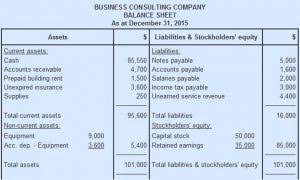Content

The tradeoffs are the cost of transportation, which goes up as the load density goes down, and the costs of sorting and baling the material. The decisions also interact with the technology choices; for example high throughput baling and sorting will only be justified if the volumes are sufficient and the distances great enough. Network economies arise due to the interconnectedness of the national transmission grid, so that significant saving in inputs and direct routing yield both economies of scale and economies of scope. These are defined later in this chapter, along with a review of the relevant literature. Network economies arise due to the interconnectedness of the national transmission grid so that significant saving in inputs and direct routing yield both economies of scale and economies of scope.
A fixed cost can feasibly change over time, but not during the contractual period. Fixed costs are reliable, and accountants should be able to easily distinguish them from variable costs for this reason. A fixed cost is one that doesn’t change for a company based on demand for a product. Some costs have components that are fixed and some that are variable. A portion of the wage for a salesperson may be a fixed salary and the rest may be sales commission.
Costa Vida
To better understand how fixed and variable costs differ, let’s use personal finances as an example. As a single adult, your expenses would normally include a monthly rent or mortgage, utility bill, car payment, healthcare, commuting costs, and groceries. If you have children, this can increase variable costs like groceries, gas expenses, and healthcare.
These costs are not considered variable because they’re discretionary. Rather, they’re “variable,” because the amount that you spend differs from month to month. It’s much easier to budget for fixed expenses than it is to budget for a variable expense or discretionary expense. Paula Pant is an expert on retirement planning, financial planning, debt management, and budgeting who speaks and writes regularly on personal finance subjects. She graduated magna cum laude from the University of Colorado at Boulder and is a real estate investor with multiple rental properties.
The Difference Between Fixed Cost, Total Fixed Cost, And Variable Cost
Fixed cost has an impact on the profitability of the business and any increase in the fixed costs in the future would result in reduced profits. Once the fixed costs are identified the costs do not change until the specified period of an agreement or a schedule, thereby brings stability in the business. Total fixed costs, in contrast, are the same at all volume levels within the normal range. …another group, the second, covers fixed cost (accountants’ “overhead costs”), which includes items not easily varied.
That’s because as the number of sales increases, so too does the variable costs it incurs. Cost structure management is an important part of business analysis that looks at the effects of fixed and variable costs on a business overall.
- If there are 40,000 machine hours during the year, the rent will be $3 ($120,000/40,000) per machine hour.
- With a variable cost, the per unit cost stays the same, but the more units produced or sold, the higher the total cost.
- These types of expenses are composed of both fixed and variable components.
- To compute the variable cost per unit, the slope of the line is determined by choosing two points and dividing the change in their cost by the change in the units of activity for the two points selected.
- Our Accounting guides and resources are self-study guides to learn accounting and finance at your own pace.
- Whereas, the variable cost incurs when there is any kind of production.
- This would mean you don’t have to worry about these costs increasing whether your business is selling more than normal—or less.
Fixed costs may include lease and rental payments, insurance, and interest payments. Companies can produce more profit per additional unit produced with higher operating leverage.
Fixed Cost Example #3
Other examples of variable costs are delivery charges, shipping charges, salaries, and wages. Performance bonuses to employees are also considered variable costs. In many instances, reducing variable costs are easier to manage without major disruptions than changing fixed costs.
This post is to be used for informational purposes only and does not constitute legal, business, or tax advice. Each person should consult his or her own attorney, business advisor, or tax advisor with respect to matters referenced in this post.
Fixed cost is paired with its opposite, variable cost, in evaluating the total cost structure of a company. For every business to function, the major fixed costs as mentioned previously are rent, EMIs, salaries and insurance premiums. In the current COVID situation many firms had to hard stop owing to the lockdown norms put forth by governments across the globe.
Although total fixed costs are constant, the fixed cost per unit changes with the number of units. Make sure to be clear about which costs are fixed and which ones are variable. Take your total cost of production and subtract your variable costs multiplied by the number of units you produced. Fixed costs remain the same regardless of whether goods or services are produced or not. As such, a company’s fixed costs don’t vary with the volume of production and are indirect, meaning they generally don’t apply to the production process—unlike variable costs.
How Do Variable And Fixed Costs Apply To Accounting?
You know over each period what these costs will be, and you don’t need to make any budget accommodations if production increases suddenly. With your entire cost picture complete, you’ll need to determine which costs are fixed costs and which are variable. This is easy enough when you consider whether or not something is contracted at a certain rate, and whether the rate of a cost fluctuates from month-to-month based on variables. Graphically, the total fixed cost looks like a straight horizontal line while the total variable cost line slopes upward.
Fixed cost as the name suggests is fixed and does not change owing to which the management can keep the fixed cost as an amount that is predetermined and make decisions. Fixed costs are not limited to the aforementioned but may also include telephone / internet bills and other expenses like electricity bill which is generated on a minimum amount even if there is no consumption.
At All Costs
Additionally, fixed costs can help the management in taking decisions based on the predetermined costs that are in the best interest of the business to thrive in the market conditions. Average fixed costs are the total fixed costs paid by a company, divided by the number of units of product the company is currently making. This tells you your fixed cost per unit, giving you a sense of how much the business is guaranteed to pay each time it produces a unit of your product — before factoring in the variable costs to actually produce it. For example, a retailer must pay rent and utility bills irrespective of sales. For any factory, the fix cost should be all the money paid on capitals and land.

We employee a large number of engineers who are on the road often, so… We were impressed by SIB’s ability to take on a project of this size, and to find such a wide variety of actionable savings opportunities… SIB provides a valuable service, and we would not hesitate to recommend them. Their https://www.bookstime.com/ staff was courteous and professional, and performed their review independently with very little asked of our team members along the way. When the review was completed, including the executive of revised agreements where appropriate, the work was DONE, with savings inherent in SIB’s efforts.
One way is to simply tally all of your fixed costs, add them up, and you have your total fixed costs. There are many techniques for making your business more profitable. For example, there are some handy formulas every business owner should know to figure out monthly revenue and expenses. The break-even point is the required output level for a company’s sales to equal its total costs, i.e. the inflection point where a company turns a profit. The downside to operating leverage is if customer demand and sales underperform, the company has limited areas for cost-cutting since regardless of performance, the company must continue paying its fixed costs. Advertising costs may fluctuate over time, as management may decide to increase and decrease spending over time. That said, advertising isn’t affected by sales or production levels so it is said to be a fixed cost, according to Inc.
Variable Costs
The owner took out a business loan some years ago to buy equipment and she regularly pays interest on the balance. She is also required by her state to pay for a Pet Grooming Facility License on an annual basis. A variable cost is an expense that changes in proportion to production or sales volume. Cost-volume-profit analysis looks at the impact that varying levels of sales and product costs have on operating profit.
With a higher operating leverage, a business can generate more profit. Variable costs are less predictable to a business owner, though they do typically go up or down in relation to production. If your company makes furniture and receives a big order, it will see an increase in expenses like wood, sandpaper, and other materials that are needed to craft a piece of furniture. How much of those materials you buy is dependent on the demand for your products. This is why it’s essential to forecast your business expenses ahead of time and make sure you leave room in your budget to accommodate for an increase in variable costs. At the unit level, variable costs remain the same, while fixed cost per unit varies. Fixed cost per unit reduces with the increase in volume production and vice versa.
Are You Getting What You Pay For?
Some examples include depreciation on a company-owned factory, depreciation on machinery and equipment, salaries and benefits of manufacturing supervisors, factory administration costs, etc. One challenge for accountants is the allocation or assigning of the large Fixed Costs to the individual units of product . This allocation is required by the accounting and income tax rules for valuing inventories and the cost of goods sold. If the fixed overhead is assigned using machine hours, one must keep in mind that the cost rate per machine hour is not how the fixed costs behave or occur. In our example, the cost of the rent might be assigned to the products at the rate of $3 or $4 per machine hour but the rent actually occurs at the rate of $10,000 per month. Instead, management usually sets fixed costs at predetermined rates based on company necessities.
What Does Fixed Cost Mean?
It was like having a new member of our team whom we could count on to deliver the most expansive and up-to-date industry knowledge on our various vendors and service providers. SIB’s team went to work for us and quickly found savings that we began benefiting from right away… I feel much more confident now about the funds we spend toward our operating costs, because I know we’re getting a good value. I especially appreciated the breadth of SIB’s service offerings…. Rather than relying on different experts to review each aspect of our vendor services – be it telecom, pest control, utilities, or others – we could instead turn to SIB’s team and count on them to cover all the bases. E found that SIB offers a variety of services and cost reduction strategies that our GPO doesn’t cover….
